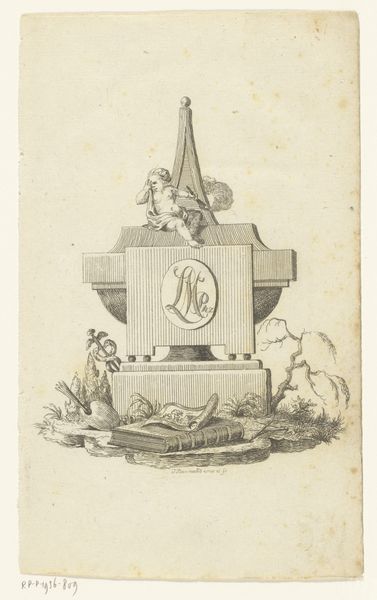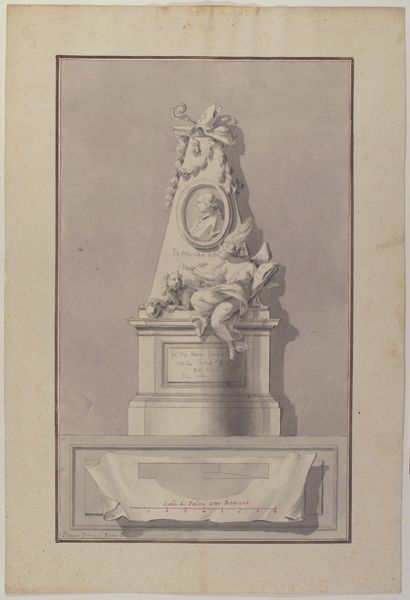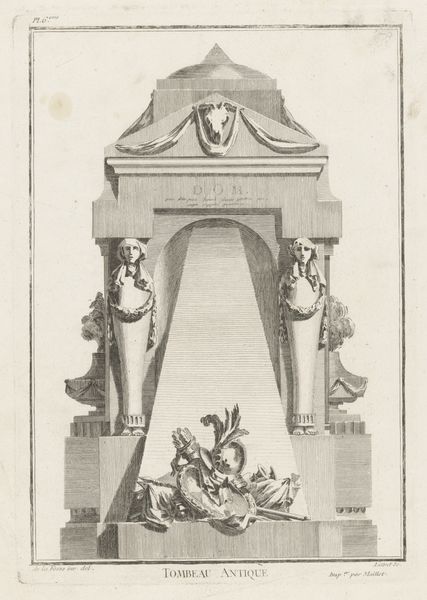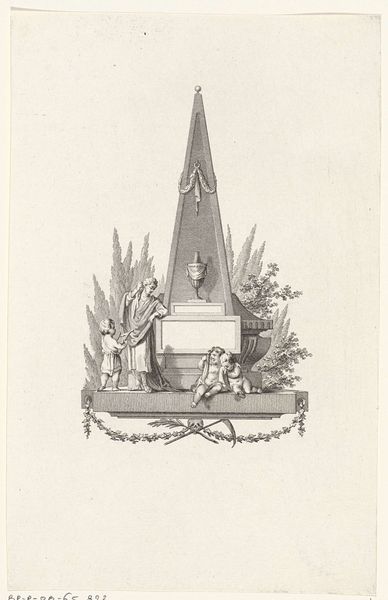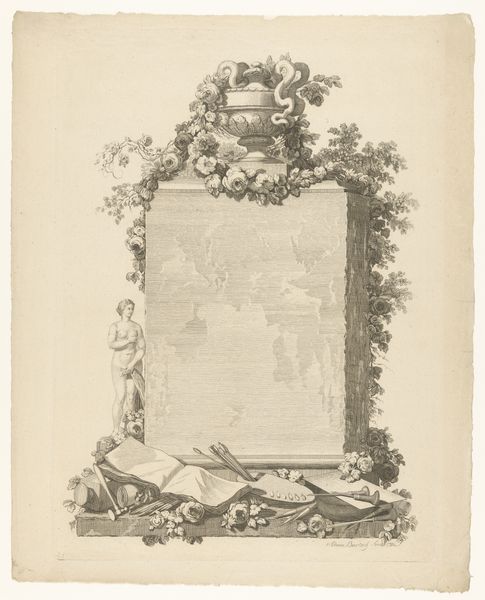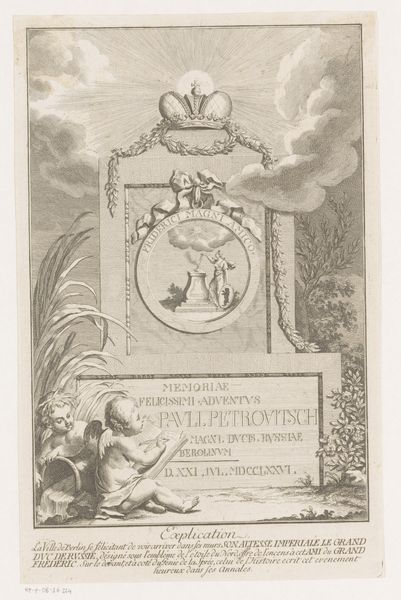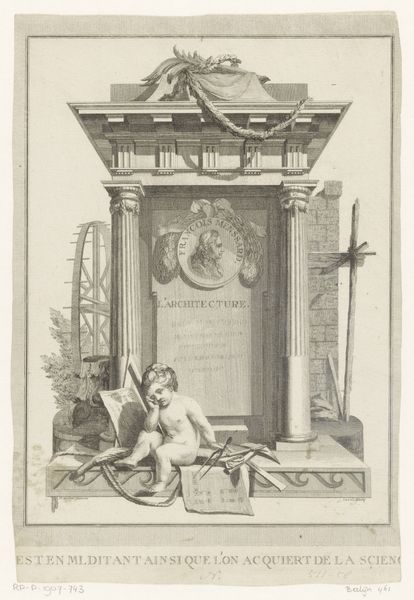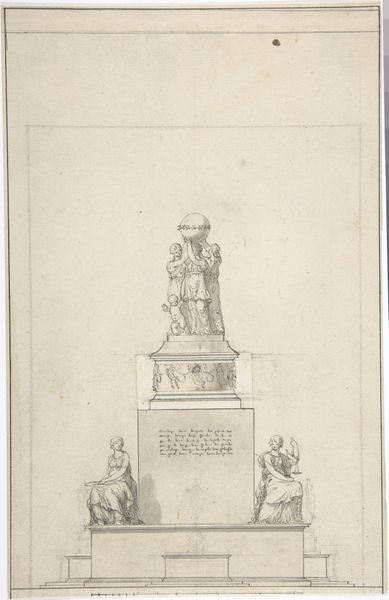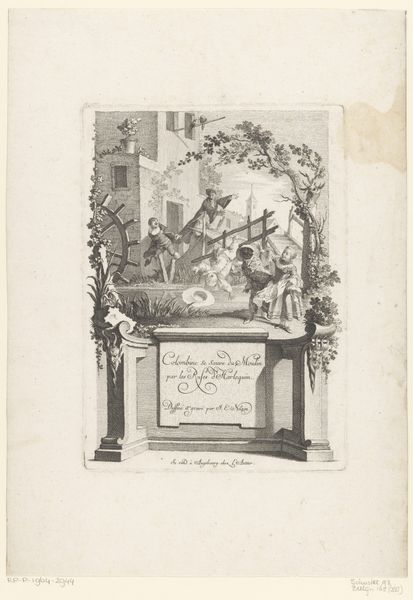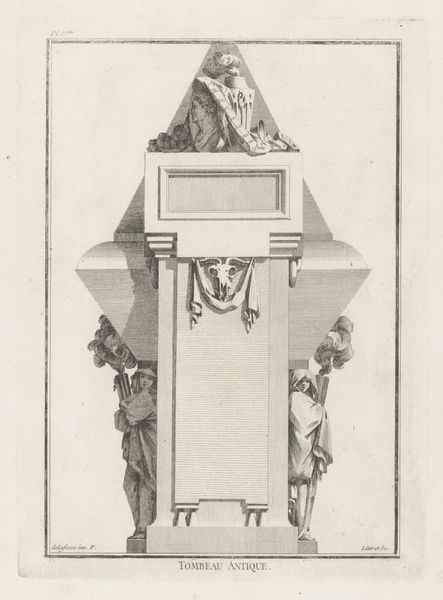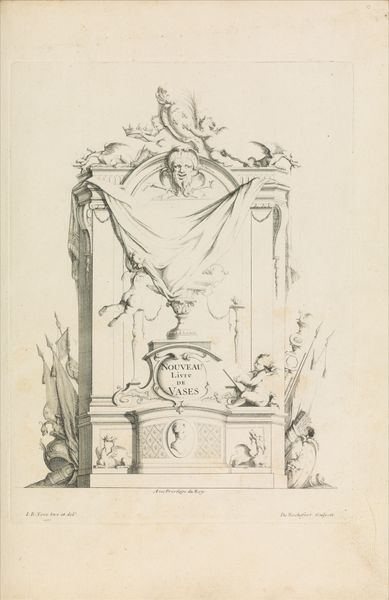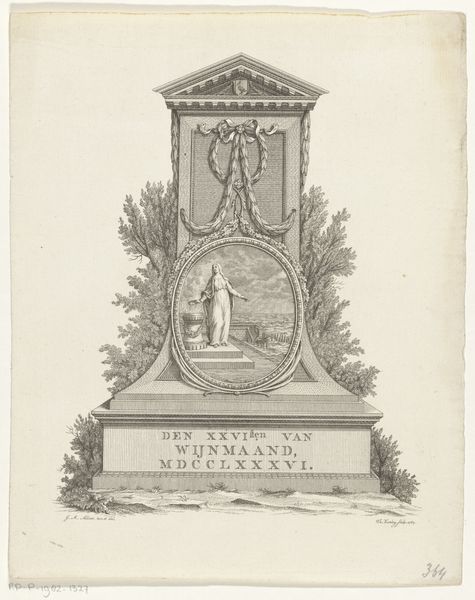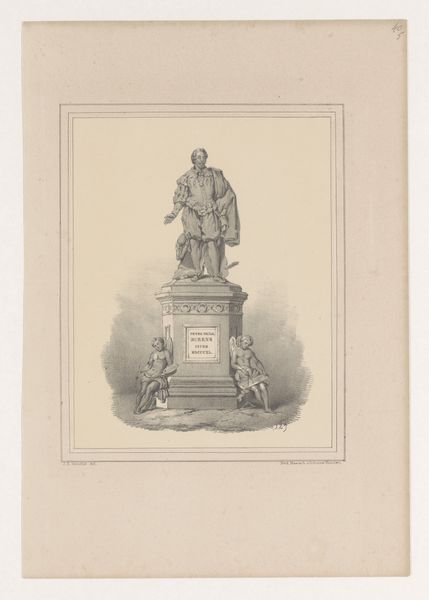
Titelvignet voor de catalogus van de kunstnalatenschap van Louis Metayer Phzn. 1799
0:00
0:00
drawing, etching, ink, pen
#
drawing
#
neoclacissism
#
allegory
#
etching
#
old engraving style
#
caricature
#
ink
#
pen
#
miniature
Copyright: Rijks Museum: Open Domain
Curator: What a curious piece. We’re looking at Jean Bernard's "Titelvignet voor de catalogus van de kunstnalatenschap van Louis Metayer Phzn.," an etching from 1799 housed right here at the Rijksmuseum. I'm immediately drawn to its miniature scale and the Neoclassical style. It feels so academic and playful at the same time. Editor: I’m struck by how this drawing functions almost like an advertisement. The rendering of artistic tools at the base–the palette and brushes, book and writing instrument—all so deliberately staged, highlighting the art-making and artisanal processes intrinsic to Metayer’s work. It speaks volumes about how art was being framed and commodified, even then. Curator: Absolutely, and within that framework, notice the allegorical elements! The cherub perched atop what appears to be a tombstone is a direct nod to themes of remembrance and legacy, aligning with its intended use as a catalog vignette for Metayer’s estate. I wonder how the artist approached such loaded imagery with that kind of artistic, yet historical awareness? Editor: Indeed! The use of etching allowed for such precise replication, meaning this image could be disseminated widely to potential buyers. I find that fascinating – that such meticulous handcraft could enable this new scale of art consumption. One is almost faced with a mechanical sense of mass-marketing masked by a handcrafted Neoclassical presentation. Curator: That touches upon something significant—the accessibility it creates and the historical context it was responding to! The Neoclassical style gained momentum with a desire to return to ideals rooted in civic virtue. But in this vignette we are prompted to think more intimately about loss and commemoration as we're guided to contemplate this late artist's art objects. It makes the vignette feel deeply emotional! Editor: You're right; the social context gives a unique depth to the visual rhetoric. The allegorical themes, production values, and promotional intent offer an intriguing view into the artistic market dynamics of that time. The cherub on top of the pillar, overlooking tools such as paint and drawing quills… they are a perfect portrait of supply, demand, creation, and loss. Curator: And to consider how this image functioned to communicate artistic value, not simply on its own aesthetic merit, but as a piece mediating larger conversations around art, labor, and mortality, really enriches our understanding. Editor: Absolutely. It’s fascinating to trace the materials and methods, connecting them back to their role within both cultural and historical networks, especially in this case.
Comments
No comments
Be the first to comment and join the conversation on the ultimate creative platform.
